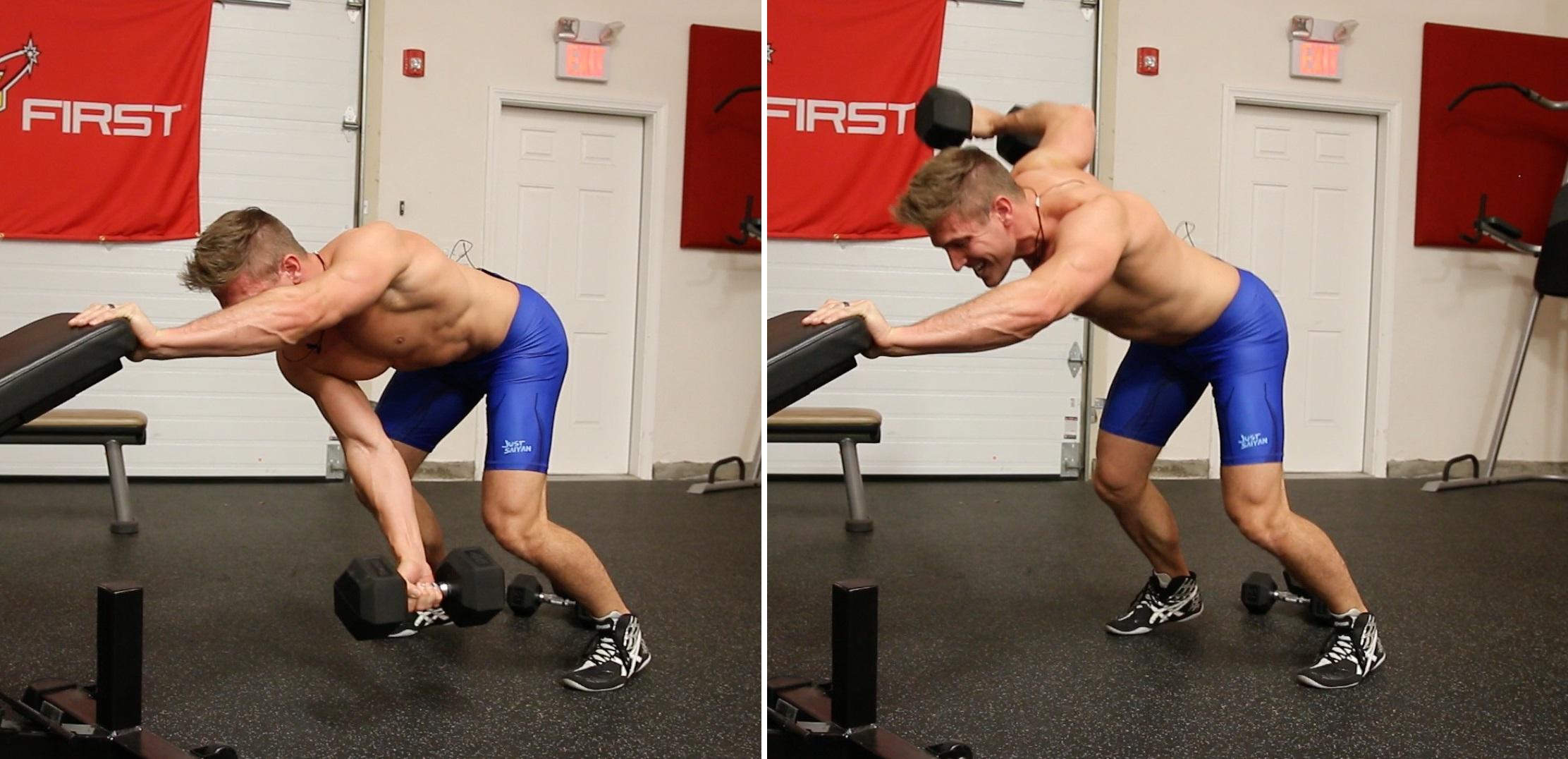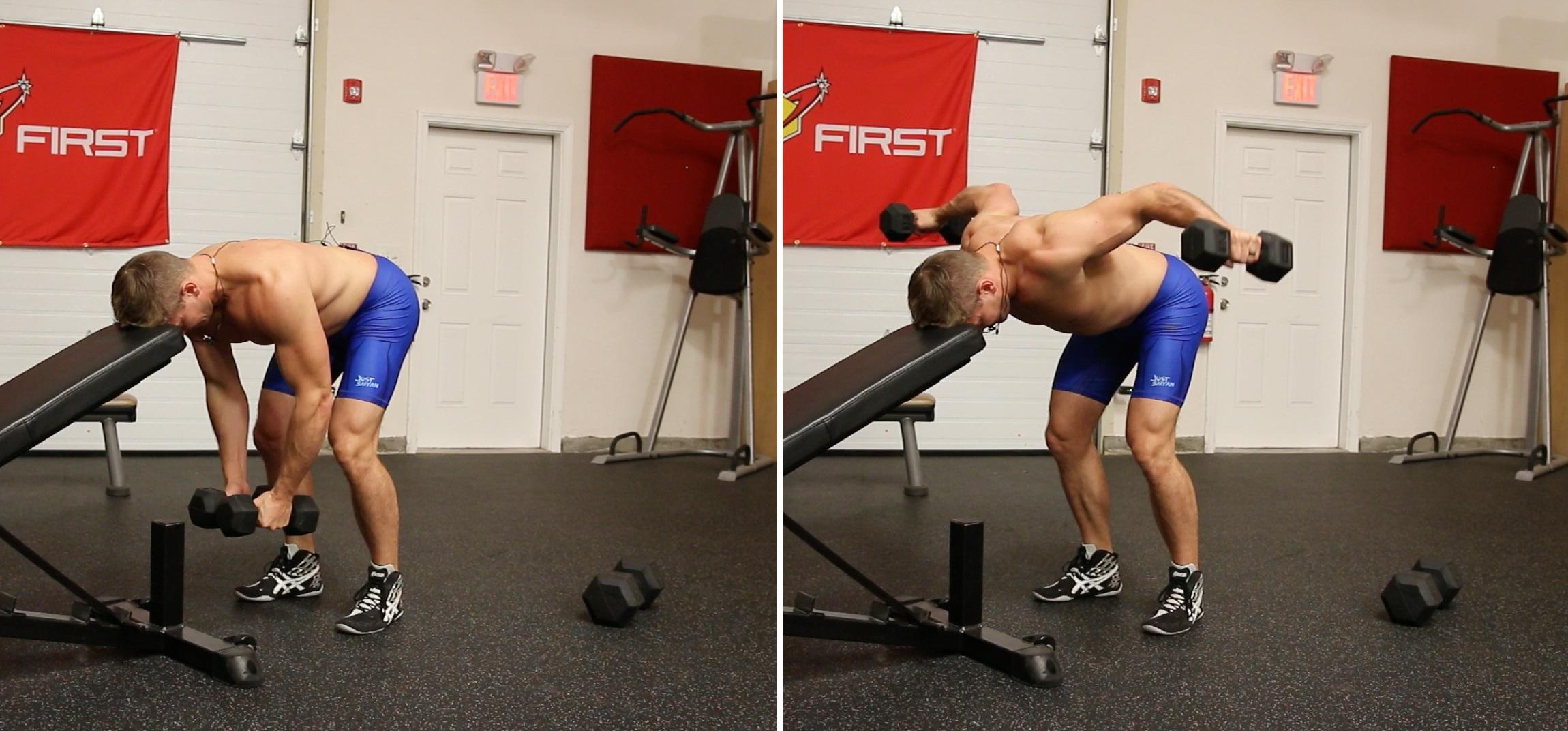1 Exercise For Capped Shoulders!
Dumbbell Rear Fly 2.0
I’m going to show you guys how to take an exercise like the dumbbell rear fly, and utilize that to help you build bigger, capped shoulders. What capped shoulders basically means is that when you flex from the side, you have that nice round look from the front to the back, kind of giving that boulder shoulder look. Unfortunately, a lot of us have a hard time building our rear delts, and it’s not because we’re not doing exercises to target that area, it’s because the exercises we do are flawed.
Why Is The Dumbbell Rear Fly Flawed?
I say this exercise is flawed for a few different reasons.
Flaw #1: Lower Back, Hips & Legs Will Fatigue Quickly When Using Heavier Weights
When doing a rear delt fly, if you’re trying to overload your rear delts, that also means you’re going to be placing a lot more weight on other muscles in your body, because you have to stabilize to perform the movement. It’s not like your arm is the only thing moving, because you also have to bend over so that your upper body is almost parallel to the floor to ensure you achieve full range of motion (ROM). What this means is that, even though you are sitting back a bit, you have to fight your body from tipping forward. Therefore you have to keep your lower back arched, which puts strain on your spinal erectors, while your lower back, legs and core will all start to fatigue, because you have to keep all of those things flexed to stay in position.
Flaw #2: When Training Both Arms At Once, ROM Is Restricted At The Bottom Of The Movement
You could literally get out of your chair right now, stand up, and put your arm directly out in front of you (as it would be for a bent-over rear delt fly), and pull your arm as far as you can across the center of your body and feel the stretch through the rear and middle deltoid. Now imagine how that would benefit you if you were able to take advantage of that short ROM when doing the actual exercise with a lot of weight.
Also when using both arms at the same time, you might not be able to fully focus on the extension at the top of the movement. What I like to do when I do this exercise is post myself up with one arm. If I were to do this movement and apply my cheat & recover training, I would set up a bench at a slight incline, put the hand I am not using on the bench, and hold the dumbbell in the other hand. This variation has a number of benefits. It makes it easier to stay parallel to the floor, as when doing both arms at the same time, a lot of people end up ‘sitting’ above parallel. It also allows you to displace the weight of your body between your arm and legs in order to hold yourself in position. This means a lot less stress on your lower back, less chance of fatigue in your legs, and of course this way you can also use a lot heavier weight.
How Is The Dumbbell Rear Fly 2.0 Performed?
Once in position with your hand on the bench, a dumbbell in the other hand and your upper body parallel to the floor, you’ll start by bringing your arm across the center of your body to get that deep stretch through your rear and middle delts. You’ll then use a bit of swing to ‘throw’ the dumbbell up for the concentric portion of the movement, before controlling the negative as much as you can. Keep in mind you should only maintain a SLIGHT bend in your elbow in order to keep the focus on your rear delt. DO NOT turn this into a rowing movement for the back by bending your elbow anywhere near 90 degrees.

Once you’ve completed 8 cheat reps on one side, you’ll switch sides and complete another 8 cheat reps for your other arm. When you go into the recover reps you have a choice – you can do them one arm at a time, but because they are the recover reps and we already did the overloading on the cheat reps, you can do both arms at the same time if you like. What I like to do is actually rest my head on the bench when doing both arms at the same time, using my head for support so I can focus on just moving my arms up and down.

YOUR NEXT WORKOUT
When trying to target the rear deltoids it’s best to start your workout with a standing dumbbell press or heavy overhead press and then utilize an exercise like this AFTER completing all sets your sets with those exercises. This is because you can overload all three deltoids for maximum growth with a pressing movement and an exercise like this is more for isolating the rear deltoid head.
- 4 sets
- 8 – 10 reps per side
- Rest 60 – 90 seconds between sets
Why Aren’t My Shoulders Growing?
At the end of the day, if you’ve been doing shoulder training and not getting sore (granted being sore isn’t the only indication of muscle growth) or seeing growth, it could be because you’re not using enough weight, or benefitting from that full stretch at the bottom and the full extension at the top.
If I were to apply this to my own workout, I wouldn’t use this as the first exercise. I would still start off with a really heavy overhead press, push press, seated or standing dumbbell press. This could then be used as the second exercise if you wanted to really focus on your rear delts before hitting your middle and front delts with other isolation movements.
Conclusion
In a previous VS series video I found that you actually get a lot more rear delt activation doing a standing dumbbell shoulder press compared to any other variation of the movement. So, if your rear delts are lagging, try starting your workout with a standing dumbbell press to make sure you’re hitting those rear delts hard, then go into an exercise like this before finishing your workout anyway you want to.








